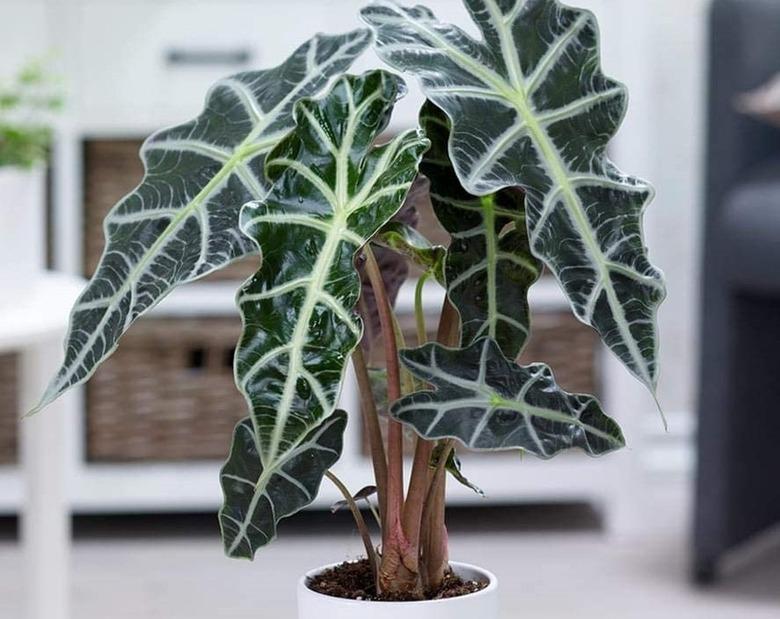How To Care For An Elephant Ear Plant
Many popular houseplants come from the tropics, offering blossoms in exotic shapes and colors, like orchids and birds of paradise, and exceptional leaves like fiddle leaf ferns. The elephant ear plant falls into the tropical foliage category, with its huge, lovable leaves shaped like arrowheads with prominent veins. But these plants can flower too, and the seeds propagate the species.
Meet the Elephant Ear Plant
There are several types of elephant ear plants out there. The complete common name for one popular species of this plant is Amazonian elephant ear (Alocasia x amazonica). It may look distinctly Amazonian, but it is actually native to Asia. As a houseplant, it is the leaves that make it so popular. They are a green so deep that they can appear purple, marked by prominent veins much lighter than the leaves. Look for rough serration around the edges.
Elephant ear plants are grown for their leaves in this country, but in the wild and sometimes in cultivation, they bloom. The flowers are fragrant and pearl colored, growing in clusters surrounded by pale spathes. The fruits are berries that contain seeds.
Care for the Elephant Ear
Despite its tropical allure, it is easy to grow an elephant ear plant. Indoors or out, the plant needs warm conditions, indirect or filtered sun, and humus-rich, well-drained soil. These plants are not at all drought tolerant, and crave plenty of water. Letting the soil dry out completely is a very bad idea. Keep it moist at all times, but never wet. That's why good drainage is important. Indoors, use potting soil with a lot of peat moss, lightened up with sand. Repot every three years, but choose a container only an inch or so larger than the old one.
The glorious elephant ear leaves will crisp if you place the plant in direct sunlight. But they do need plenty of light. Set the sun/shade gauge at about 60/40 percent. Only those in truly warm climates can grow these foliage plants outdoors, as they thrive only in U.S. Department of Agriculture plant hardiness zones 10 through 12.
Grow Elephant Ear From Seeds
If your goal is to propagate elephant ear plants, division or root cuttings are the easiest way to go. Essentially, you dig up the root ball and cut it into several divisions. Then plant each separately. These sections are quick to thrive and grow.
Since division is so quick and easy, few gardeners grow elephant ear plants from seeds. It is possible, of course, but should only be attempted by very patient gardeners since it will takes years before seedlings grow large enough to be attractive foliage plants. The plants are self-pollinating, so fertilizing a flower isn't something you have to worry about. When the fruits appear, let them mature and fall from the plant before extracting the seeds and cleaning them. Plant them in potting soil, scattering the seeds, then pressing them in with your fingers. Mist the top of the soil and wait for the seeds to germinate.
